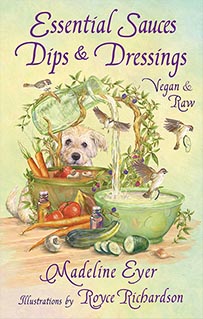They put what on my carrots?
Try This Instead
With picnic season fast approaching I thought I’d share some of the best ways I know to ensure veggies that are as fresh and delicious as possible.
Many of us feel that carrot and celery sticks make excellent snack food. They travel well and taste great both on their own or as a carrier for your favorite hummus or dip du jour. Cutting them up in advance tends to dry them out pretty quickly though, making them far less tasty and appealing. And those pre-packaged baby carrots, while convenient, aren’t the best option. Here’s why.
Many baby carrots are actually not baby carrots at all. They are made by cutting large carrots that are specially bred for sweetness down to 2” sections and then polishing them with a machine. This process tends to dry the carrots out, which is why they often have a white film on them. Then they dip the so-called baby carrots into an antimicrobial bath to reduce possible contamination. And what is in that treatment? Usually chlorine. Yuk! No thanks, I’ll pass.
So what’s a carrot lover to do? To begin with, grow or obtain the freshest most local carrots available. Scrub them with filtered water, a veggie brush and a natural cleaner. Although there are other options to choose from, one of the simplest is to add a couple of drops of dōTERRA lemon essential oil to the water. I trust lemon’s anti-bacterial properties and dōTERRA’s quality. In the past I’ve also used white vinegar, but have since learned that most white vinegar is made from GMO corn. Now I refuse to even wash my floors and windows with it, let alone ingest it. But I digress.
Once the carrots have been scrubbed, cut them into sticks (if they’re organic, which I highly recommend, there’s no need to peel them). Then submerge them in a bowl of cool purified water and put it in the fridge for about half an hour. Then remove the bowl from the refrigerator and pour the water into a container (a mason jar with a lid works well). The carrots will have absorbed some of the water (which is why it’s important to use purified water) helping them to remain crisp and fresh longer when stored in a sealed container in the fridge (or picnic cooler). And the leftover water? Delicious. It has a light, sweet carrot taste that is so refreshing. The same process works well for celery and probably other veggie slices as well.
The leftover soak water, or vitamin water as we like to call it, lasts for a couple of days in the fridge but we usually drink it by the following day. Fresh is best.
Enjoy your veggies!



 "Since your class, we've been eating raw and LOVING it! I spend half the time “cooking” and the food is so much fresher and tastier. I've already made the Pesto, Banana Bread, Flax Crackers, Almond Milk, and several other recipes in addition to straight away adding a dehydrator and spiralizer to my kitchen tools.
We've both come to the realization that the 30 second gratification of eating a burger doesn't come close to making up for the feeling afterward. Not to mention, we both agree we have not given up any taste what-so-ever and eating/“cooking” has become fun again (we're BOTH actually in the kitchen now at the same time).
...Thank you for such a wonderful class and for re-inspiring my husband and me."
"Since your class, we've been eating raw and LOVING it! I spend half the time “cooking” and the food is so much fresher and tastier. I've already made the Pesto, Banana Bread, Flax Crackers, Almond Milk, and several other recipes in addition to straight away adding a dehydrator and spiralizer to my kitchen tools.
We've both come to the realization that the 30 second gratification of eating a burger doesn't come close to making up for the feeling afterward. Not to mention, we both agree we have not given up any taste what-so-ever and eating/“cooking” has become fun again (we're BOTH actually in the kitchen now at the same time).
...Thank you for such a wonderful class and for re-inspiring my husband and me." "Few people are completely 'holistic' in their approach to healthy living. Madeline has combined many skills and a deep understanding of the nature of how we function and now adds raw 'food lifestyle' to her amazing repertoire to offer a truly 'holistic' approach to health and well-being."
"Few people are completely 'holistic' in their approach to healthy living. Madeline has combined many skills and a deep understanding of the nature of how we function and now adds raw 'food lifestyle' to her amazing repertoire to offer a truly 'holistic' approach to health and well-being."